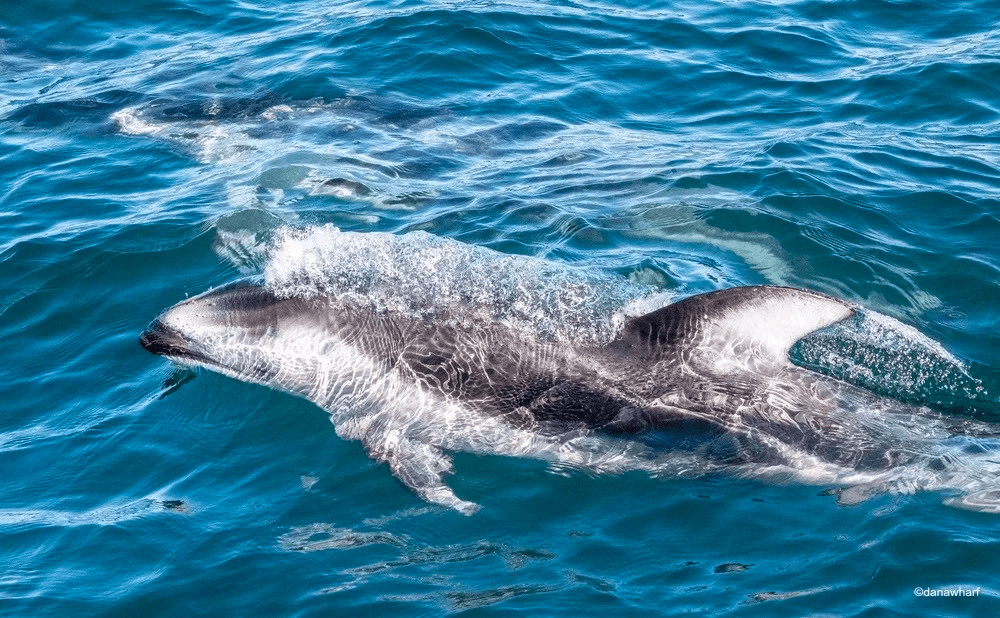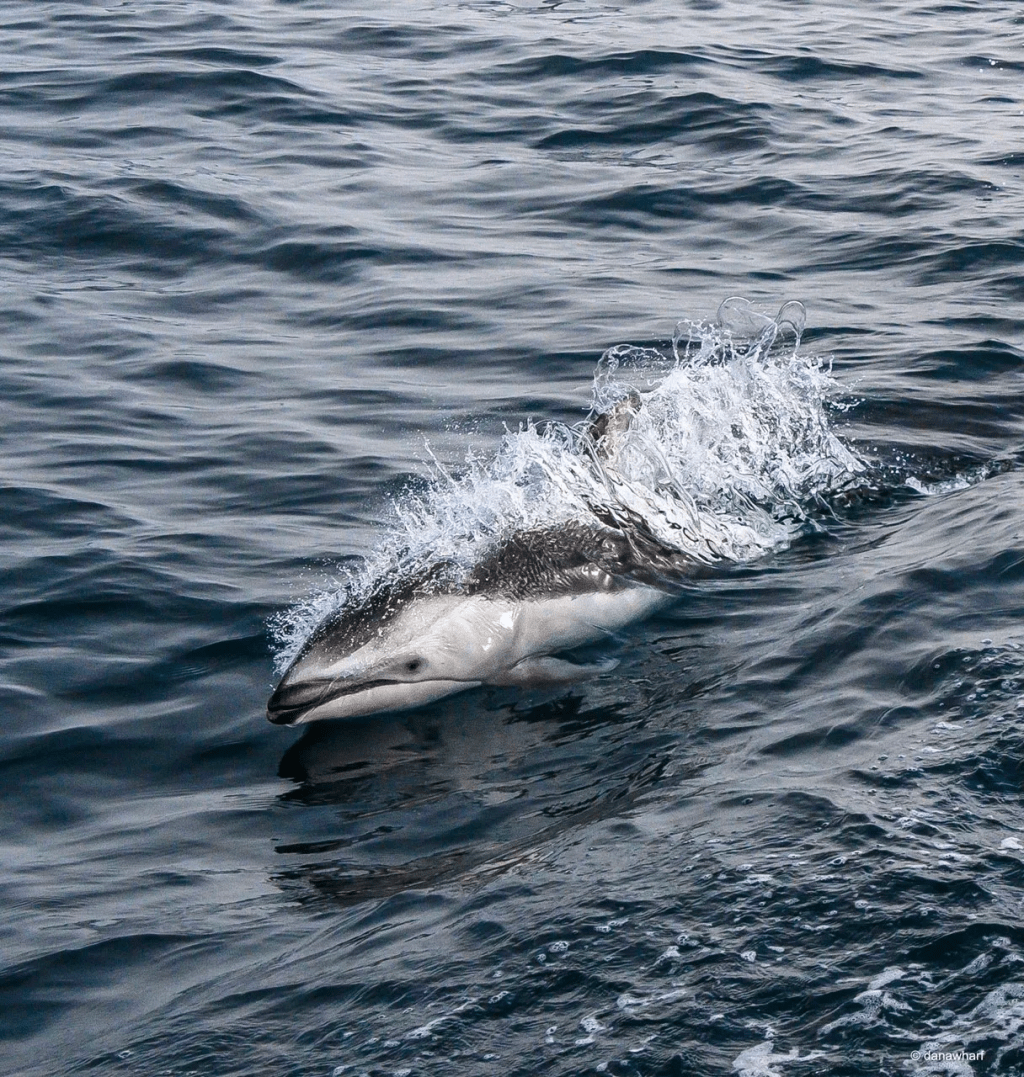The Intriguing World of Pacific White-Sided Dolphins
Pacific white sided dolphins, scientifically known as Lagenorhynchus obliquidens, are a captivating species of dolphin that inhabits the North Pacific Ocean. These marine mammals are renowned for their striking appearance, playful behavior, and acrobatic displays.

Physical Appearance:
Pacific white-sided dolphins boast a distinctive and eye-catching appearance. Their dark gray to black backs provide a stark contrast to their pristine white bellies. A conspicuous gray stripe, reminiscent of an artist’s brushstroke, extends from their eye to their flipper. This unique coloration is not merely decorative; it serves a crucial purpose in their survival, aiding in camouflage against potential predators lurking beneath the ocean’s surface.
Designed for speed and agility, these dolphins possess a sleek, streamlined body that allows them to effortlessly traverse the water. Their curved dorsal fin and elongated, slender beak contribute to their hydrodynamic design. Typically, Pacific white-sided dolphins measure between 6 to 8 feet in length and weigh between 300 to 400 pounds, categorizing them as medium-sized dolphins.
Dolphin Behavior and Communication:
Pacific white-sided dolphins are highly social creatures, often found in large groups known as pods. These pods can vary in size, ranging from a few individuals to several hundred dolphins. Within these pods, they engage in a vibrant array of behaviors and intricate forms of communication.
Their playful nature is a hallmark characteristic, as they frequently leap out of the water and surf on the bow waves created by boats. These exuberant displays serve multiple purposes, including communication, bonding, and play. Pacific white-sided dolphins are not only intelligent but also curious, often exhibiting a fascination with their surroundings and interactions with other species, including humans.
Communication within their pods is a rich tapestry of vocalizations, consisting of clicks, whistles, and body movements. These sounds are instrumental in locating food, navigating, and maintaining social bonds. Their complex and varied vocal repertoire highlights their sophisticated communication skills.

Habitat:
Pacific white-sided dolphins primarily inhabit the North Pacific Ocean, with a notable presence along the coasts of North America and Asia. They are frequently sighted in the waters off the coast of California, Oregon, Washington, and British Columbia. These dolphins exhibit a preference for cool, temperate waters, often gravitating towards areas with strong currents and upwelling. These oceanic phenomena bring nutrients from the deep sea to the surface, creating a thriving ecosystem of marine life that the dolphins rely upon. Pacific white-sided dolphins are usually found offshore in temperate waters, though they may approach coastal areas where prey is abundant.
Feeding Habits:
Pacific white-sided dolphins are opportunistic feeders with a diverse diet. Their primary prey includes small fish such as herring, anchovies, and squid. These dolphins employ a coordinated group strategy to herd and corral their prey, simplifying the catching process. This cooperative hunting behavior highlights their intelligence and social cohesion.
One noteworthy feeding behavior is “porpoising,” where they swim at high speeds, breaking the water’s surface in rapid succession. This technique allows them to cover vast distances efficiently while confusing and disorienting their prey, making it easier to capture.
Conservation Status:
Currently, Pacific white-sided dolphins are not classified as an endangered species. However, they are not immune to potential threats that could impact their population in the future. These threats encompass entanglement in fishing gear, habitat degradation due to climate change and human activities, and the pollution caused by chemicals and plastics.
To safeguard these dolphins and their habitats, conservation efforts are underway. In the United States, they are protected under the Marine Mammal Protection Act, which prohibits actions like harassment, hunting, capturing, or killing these remarkable creatures. Additionally, organizations such as the Pacific Whale Watch Association diligently educate the public about Pacific white-sided dolphins and advocate for responsible whale-watching practices, ensuring their long-term survival.
Likelihood of Sighting in Dana Point, California:
The waters off the coast of Dana Point, California, offer excellent opportunities for observing Pacific white-sided dolphins. While no sighting can ever be guaranteed in the wild, these playful dolphins are known to frequent the area.
In conclusion, Pacific white-sided dolphins are enigmatic beings that continue to captivate the imagination of those who encounter them. Their extraordinary physical characteristics, social behavior, and adaptability make them a captivating species to study and observe. By comprehending their unique attributes and the challenges they face, we can work together to ensure the preservation of their habitat and the protection of these extraordinary marine mammals for generations to come. The waters of Dana Point, California, stand as a testament to the beauty and wonder of the marine world, where the chance to witness the Pacific white-sided dolphin in all its splendor awaits.
